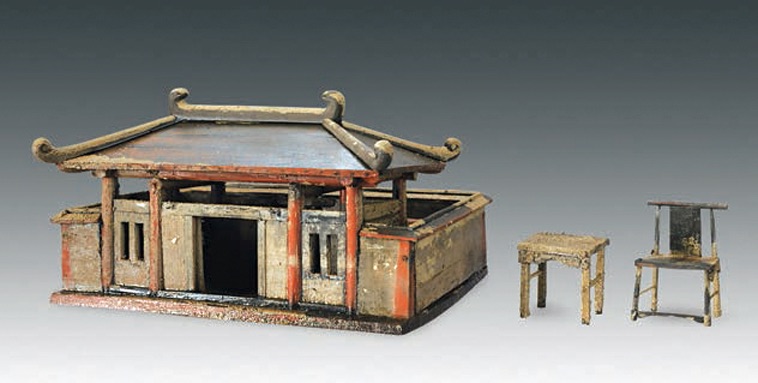900-Year-Old 'Grand Lady' Skeleton Emerges from Watery Coffin
An exquisitely preserved skeleton of a woman dubbed the "Grand Lady" has been discovered in a water-filled coffin within a tomb at Tieguai Village in China. The coffin dates back 900 years.
The archaeologists who discovered the remains found that the body was buried with numerous grave goods, including a model house that has tiny furniture inside — a dollhouse of sorts — and a silver pendant depicting two dragons chasing pearls. A banner found on top of the inner coffin (which was in turn buried within an outer coffin) says that the tomb occupant is a "Grand Lady" who lived in "Ankang Commandery." Though her real name was hard to make out on the banner, the archaeologists said that it may be née Jian. [Photos: Grand Lady's Tomb and Artifacts]
"The skeleton [of the Grand Lady] is essentially preserved, complete with fingernails and hair," a team of archaeologists wrote in a report published recently in the journal Chinese Cultural Relics.
She still had silver and gold hairpins on her head; "there were silver bracelets on her arm and a string of bronze coins on her abdomen, 83 coins altogether," the archaeologists wrote, adding that "underneath her right hand were two zongzi [which are the remains of two sticky rice dumplings], and embroidered shoes were on her feet."

Paintings of a woman, likely the Grand Lady, were found on the inner coffin, each portrait showing her wearing different clothes and accessories, the archaeologists wrote.
A clue to when the Grand Lady lived came from about 200 bronze coins found at the base of her coffin. These were minted between roughly A.D. 713 and A.D. 1100. The archaeologists said that the woman likely died not long after A.D. 1100, which means she lived during the Song dynasty, a time when art, culture and scienceflourished across China.
Model house
The Grand Lady was buried with a vast number of grave goods, including many small replicas of real-life objects called "minqi" in Chinese. One of the most striking is a well-preserved model house that has a courtyard as well as "three rooms, with a large span between the central bay and smaller secondary rooms," the archaeologists wrote.
Sign up for the Live Science daily newsletter now
Get the world’s most fascinating discoveries delivered straight to your inbox.
Other interesting discoveries within the Grand Lady's tomb include 10 female figurines depicted wearing masks and playing musical instruments, the archaeologists wrote.
Another tomb found next to the Grand Lady's was heavily looted, and few artifacts were found within it. That tomb could belong to a family member of the Grand Lady, the archaeologists said.
Both tombs were excavated between June and September 2014 by a team of archaeologists from the Nanling County Cultural Relics Administration and Anhui Provincial Institute of Cultural Relics and Archaeology. An article on the discovery was published in Chinese, in 2016, in the journal Wenwu and was recently translated into English and published in the Chinese Cultural Relicsjournal.
Originally published on Live Science.

Owen Jarus is a regular contributor to Live Science who writes about archaeology and humans' past. He has also written for The Independent (UK), The Canadian Press (CP) and The Associated Press (AP), among others. Owen has a bachelor of arts degree from the University of Toronto and a journalism degree from Ryerson University.









